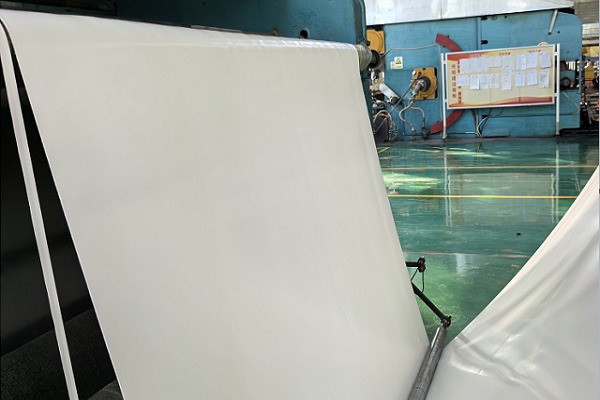
En numerosos campos de producción industrial, Las hojas de goma industriales juegan un papel indispensable. Ya sea en el químico, fuerza, Industrias de fabricación de construcción o mecánica, Su presencia se puede ver en todas partes. Para hojas de goma industrial, La resistencia a baja temperatura es una característica crucial. Entonces, exactamente cuán baja una temperatura puede resistir las hojas de goma industrial?
Las láminas de caucho natural comunes generalmente pueden resistir temperaturas que van desde -60 ° C a 120 ° C. En entornos de baja temperatura, the performance of natural rubber sheets is closely related to their molecular structure. When the temperature drops, the movement of rubber molecular chains is restricted, and the material’s elastic and other properties also change accordingly. Sin embargo, as long as it is within a reasonable low-temperature range, natural rubber sheets can still maintain certain physical properties, such as elasticity and toughness, and continue to perform their sealing and shock absorption functions. Por ejemplo, in some outdoor equipment in northern regions, when the winter temperature occasionally drops to around -60°C, the sealing parts made of natural rubber sheets can still work normally, asegurando el funcionamiento normal del equipo.
In addition to natural rubber sheets, there are also some rubber sheets made through special processes that perform better in low-temperature resistance.
Por ejemplo, low-temperature vulcanized rubber sheets are high-performance rubber materials made through a low-temperature and long-time vulcanization process. These rubber sheets have excellent corrosion resistance, low-temperature resistance, and adhesion to metals.

> Envíe correos electrónicos a sales@jingdongrubber.com,Obtenga una cotización ahora
En los últimos años, with the continuous advancement of technology, the application of low-temperature vulcanized rubber sheets in anti-corrosion linings has become increasingly widespread. In some chemical pipelines or containers that need to withstand ultra-low temperatures, low-temperature vulcanized rubber sheets can well adapt to the environment, prevent medium leakage and corrosion, and their low-temperature resistance is significantly improved compared to ordinary rubber sheets, meeting the demands of more severe low-temperature working conditions.
The requirements for the low-temperature resistance of rubber sheets vary in different industrial application scenarios.
Por ejemplo, in some ordinary indoor industrial environments, the operating temperature of equipment is usually not too low, and general rubber sheets can meet the needs. Sin embargo, in some extreme environments, such as polar scientific research equipment or oil extraction in high-cold regions, rubber sheets with stronger low-temperature resistance are required. In these cases, the low-temperature resistance of rubber sheets directly affects the safety and reliability of the equipment. If rubber sheets lose elasticity or become brittle at low temperatures, it may lead to seal failure, component damage, and other serious consequences.
To accurately assess the low-temperature resistance of industrial rubber sheets, researchers usually conduct a series of low-temperature aging tests.
By subjecting rubber sheets of different formulas and processes to low-temperature freezing aging tests, their performance differences can be compared, and new products with better performance and more suitable for market demands can be selected. These tests not only help enterprises improve production processes and product quality but also provide important data support for new product development. Por ejemplo, when developing a new type of low-temperature resistant rubber sheet, researchers will adjust the rubber formula and vulcanization conditions based on the test results to achieve the best performance at low temperatures.
La resistencia a baja temperatura de hojas de goma industriales is a complex yet crucial indicator.
From common natural rubber sheets to advanced low-temperature vulcanized rubber sheets, different products have their own performance at different low temperatures. Understanding and mastering the low-temperature resistance characteristics of industrial rubber sheets is of great significance for the correct selection and use of rubber sheets, ensuring the safety and stable operation of industrial production. In actual engineering applications, we need to consider various factors based on specific working environments and requirements, and select the appropriate industrial rubber sheets to maximize their performance within the corresponding temperature range, extender su vida útil, reduce production costs, and also ensure the safety and reliability of the production process.
Jingdong caucho Co., Limitado. es un fabricante profesional de láminas de caucho, producir láminas de caucho de silicona, lámina de caucho natural, lámina de caucho flúor, hoja de goma de neopreno, lámina de caucho aislante,láminas de caucho EPDM, láminas de caucho resistentes al aceite, láminas de goma antiestáticas, láminas de caucho retardantes de llama, láminas de caucho conductoras, láminas de goma antideslizantes, y esteras de establo, etc.. con 40 años de experiencia en la industria, son populares tanto en casa como en el extranjero. Si necesitas alguno de nuestros productos,por favor envíe correos electrónicos a ventas@jingdongrubber.com.

